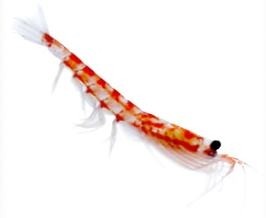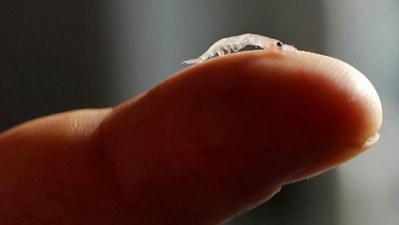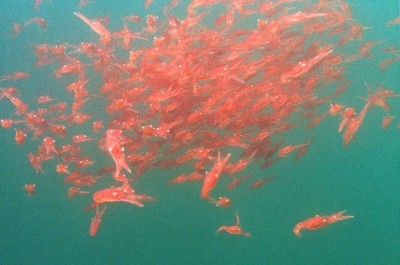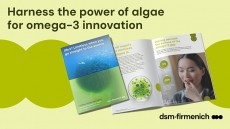Antarctic krill harvest under scrutiny after penguin study

The study, published in the Proceedings of the National Academy of Sciences, found that penguin species, such as Chinstrap and Adelie, had fallen by up to 50 percent in western Antarctica over the past 25 years due to a fall in the availability of krill.
The decline in krill density was attributed not to over fishing but to warming waters, less sea-ice and increased predation from whales and seals.
The research was conducted by scientists from the National Oceanic and Atmospheric Administration (NOAA) and the Scripps Institution of Oceanography.
Most abundant
The shrimp-like Antarctic krill (Euphausia superba) is one of the globe’s most abundant species found in densities of up to 30,000 creatures in a cubic-metre of seawater. Rich in phospholipids and omega-3s, they are harvested by companies such as Aker Biomarine and Neptune to make omega-3 products.
The British Antarctic Survey said the research underlined the need to monitor krill populations. The organization’s Simeon Hill told NutraIngredientsUSA: “This is a very welcome piece of research which illustrates that krill is a key part of a complex ecosystem. There are many causes of change in this ecosystem, including fluctuations in the climate and long term changes in the balance of species in the foodweb.
“These changes to penguin populations are a useful reminder of the need to continue to monitor and carefully regulate the krill fishery to ensure that it does not become an additional source of pressure on vulnerable populations.”
Last month, Hill told an omega-3 conference in Bruges, Belgium that the annual krill harvest ot 210,000 tonnes was 34 percent of the limit of 620,000 tonnes set to minimize environmental risk.
Environmental impact
Eric Anderson, Aker BioMarine Antarctic US, told NutraIngredientsUSA: “As the largest commercial harvester, we take very seriously the health of the ecosystem and krill biomass. Aker BioMarine adheres to the highest environmental standards in all aspects of operations and is focused on operating our fishery in a manner which emphasizes sustainable harvesting practices and minimizing environmental impact.
Our aim is to responsibly utilize the valuable marine resources we harvest to the fullest of their potential.”
Aker cooperates closely with the Commission for the Conservation of Antarctic Marine Living Resources (CCAMLR) and the World Wide Fund for Nature (WWF-Norway) to ensure krill is sustainably harvested, he added.
A co-founder of the Association of Responsible Krill Harvesting Companies (ARK), Aker earned Marine Stewardship Council (MSC) certification last year.
Wael Massrieh, Neptune Technologies’ vice president of scientific affairs, told NutraIngredientsUSA: “According to the numerous recent scientific papers and the testimony of world leader researchers on Antarctic krill populations, such as Dr Simeon Hill, on the one hand what is happening at the WAP (Western Antarctic Peninsular) is a local environmental situation which cannot be generalised to the entire marine ecosystem of the continent.
“On the other hand, the overall Antarctic krill population is sustainable and still very abundant, and strictly managed.”
Meanwhile, the sustainability of krill harvesting will be highlighted at the Vitafoods Europe trade show in Geneva, Switzerland next month during at a presentation by Nina Jensen conservation director for environmental group WWF-Norway.
Source: The Proceedings of the National Academy of Sciences
Title: Variability in krill biomass links harvesting and climate warming to penguin population changes in Antarctica
Authors: Wayne Trivelpiece et al.
























